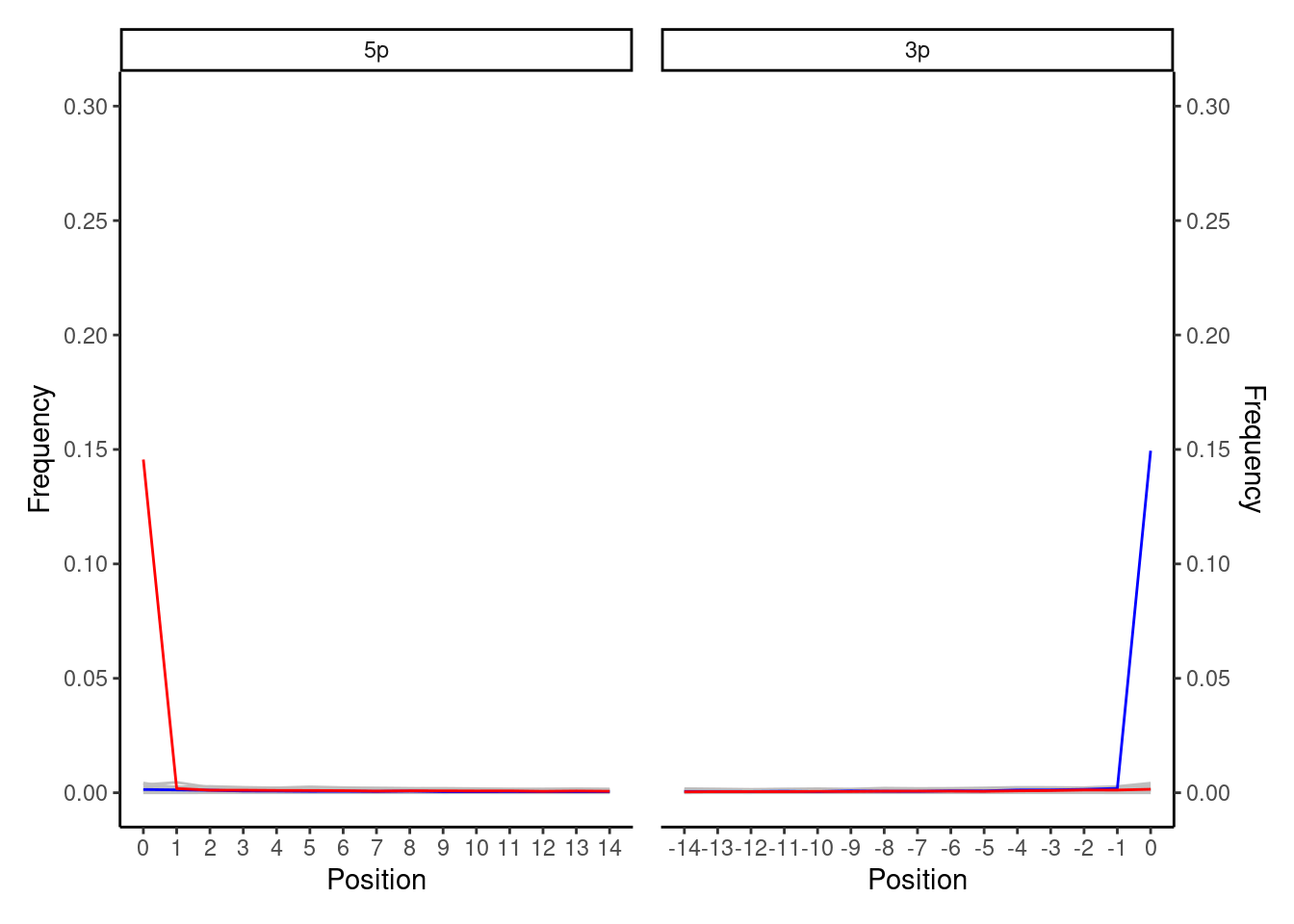
3 Partial UDG (double-stranded)
CARICATURE PLOT GOES HERE

The smiley plot presented here has been generated from a double-stranded ‘partial UDG’ or ‘UDG-half’ library. UDG or USER Treatment consists of enzymatically cleaving off ends of molecules when a uracil is present. Whereas complete-UDG UDG full runs the protocol long enough for all DNA molecules to be enzymatically modified, partial UDG stops early, meaning that a small number of reads retain uracils on the last base. This allows for simultaneous authentication of damage, but makes it easier to then in silico remove damage by ‘trimming’ off one base from either end of each read, so you can ensure you do not incorporate damaged bases into downstream analyses.